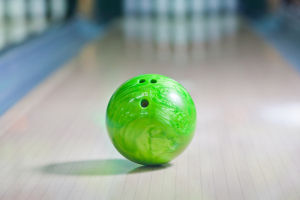Softball is a fast-paced sport that requires specific equipment to ensure both safety and performance. When diving into the world of softball, understanding the essential gear is crucial.
This includes items like the softball, bat, gloves, and protective gear such as helmets and pads. Let’s walk through each of these components in more detail, so we’re fully prepared for the game!
Softball: The Heart of the Game
The first piece of equipment we need to talk about is, of course, the softball itself. Depending on the type of game—fast-pitch or slow-pitch—the size and weight of the ball can vary. For international fast-pitch games, the circumference of the ball ranges from 30.2 to 30.8 cm, and it weighs between 178 grams and 198.4 grams. On the other hand, slow-pitch balls are slightly smaller, measuring 29.4 to 30 cm in circumference and weighing between 166.5 and 173.6 grams. These balls are typically made with high-quality materials like cotton fiber, mixed cork, rubber, or composite materials.
Softball Bats: Power Meets Precision
Next up, the softball bat. Softball bats are quite different from baseball bats, especially when it comes to the hitting surface. Softball bats tend to have longer and wider hitting areas compared to baseball bats. This difference allows for more power and accuracy when making contact with the ball. Whether playing fast-pitch or slow-pitch, choosing the right bat is essential for maximizing performance at the plate.
Understanding the Field and Basic Rules
In terms of the playing field, softball fields are typically divided into an infield and an outfield. The infield is made of dirt, while the outfield is covered in grass. The bases are arranged in a square, with each base 18.3 meters (60 feet) apart. The pitcher's mound, located at the center of the field, is where the pitcher stands to throw the ball. The key objective of the game is for the batting team to score as many runs as possible by hitting the ball and successfully running through the bases to home plate.
Scoring and Base Running
Scoring in softball is pretty straightforward: a player needs to run around all the bases in order, starting from home plate, to score a point. After hitting the ball, players run counterclockwise around the bases, aiming to reach home plate. However, players must be careful, as the opposing team can eliminate them by catching the ball or throwing it to the base before the player arrives. Base running requires quick thinking and agility, as players attempt to outsmart the defense and steal bases whenever possible.
How to Get Players Out
The pitcher’s goal is to get batters out in several ways: by forcing a groundball or pop-up, or by striking the batter out. If a batter hits the ball and a fielder catches it before it hits the ground, that’s an out. Similarly, a batter can be called out if they accumulate three strikes (fail to hit the ball properly three times). A crucial part of softball strategy is to prevent the opposing team from scoring while trying to get them out with these defensive tactics.
Softball Rules and Regulations
There are also specific rules that dictate how the game is played. For example, if a batter hits a foul ball after already having two strikes, they are out. Likewise, if a player is caught running too far past a base without the ball being caught, they may be tagged out. One important rule in slow-pitch softball is that players are not allowed to steal bases until the ball is hit.
Fast-Pitch vs. Slow-Pitch Softball
The game of softball has evolved over the years, with the distinction between fast-pitch and slow-pitch becoming a key factor in gameplay. Fast-pitch softball features a shorter distance between the pitcher and the batter, as well as faster throws, while slow-pitch games have more relaxed rules and longer distances. In slow-pitch, the ball is pitched in a high arc, allowing players to have more time to hit the ball. Understanding these differences helps players decide which version of the game to engage in based on their preference for speed and difficulty.
International Softball Federation and Official Regulations
The International Softball Federation (ISF) governs the sport of softball globally. The ISF is responsible for organizing tournaments, establishing rules, and supporting national federations. It recognizes both fast-pitch and slow-pitch softball as official events and supports global participation in both formats. For those passionate about the sport, getting involved with local softball clubs or leagues is a great way to stay active and continue developing your skills.
Ready to Play? Let’s Dive Into Softball!
In conclusion, getting a solid grasp of softball’s equipment, rules, and strategies makes all the difference in enjoying the game. It’s time to grab your gear, step onto the field, and feel the excitement! Softball is for everyone, and with the right approach and a little practice, we can all get better and have a great time.
For those just starting, take your time to learn the ropes and don’t hesitate to join the community. Softball is all about inclusivity, and there’s always space for new players to jump in and enjoy the game! Let’s play ball!


